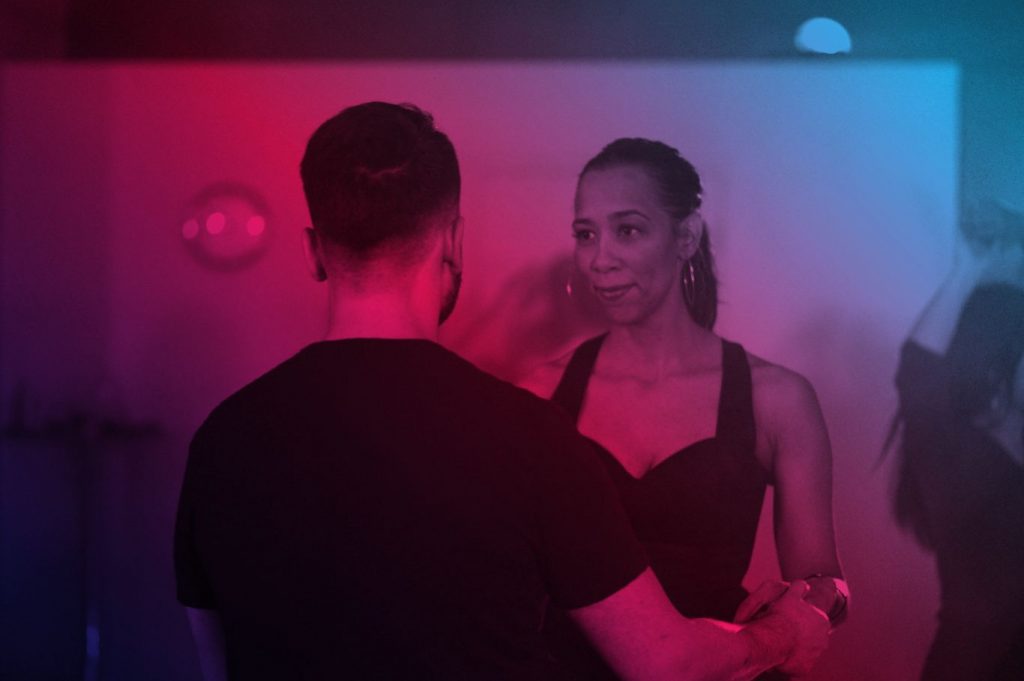Now that we have started classes there are similar tips that should be kept in mind whether you are a beginner salsero in level 1 or an intermediate level 5 dancer. Here are some of these universal tips that will assist you on the dance floor and in class.
1) Create tension in your frame – When you instructor keeps reminding you to keep your arms 90 degrees, open the thumbs and only use you fingertips in a light pull, they are reminding you to create tension in your frame. This is because salsa is not a choreographed dance. You never know what the next move is and the leader has to communicate what the upcoming move is with the tension in their fingers. To assist in the communication process, keep your arms at a 90 degree angle with your elbows flush along the sides of you bodies. Don’t stretch your arms. This weakens your tension. Both leaders and followers should not clamp their thumbs down on your partners hands because, again, this weakens tension. Your only hold should come from your fingertips curling and pulling gently against your partners fingertips.
2) Don’t look down – Looking down is a bad move for many reasons. The first is it shows your self consciousness which affects lead and follow. Your partern can sense when you aren’t confident and they become less confident about your lead or follow. Also looking down as a leader doesn’t allow you to see around you and you can end up hurting yourself, your partner and couples around you. Same with followers who look down. You can end up traveling too far or into another couple.
3) Listen to salsa music outside the classroom – Many students worry that they don’t understand the salsa beat. This is because they only listen to salsa music for 1 hour a week in a classroom where you are busy learning new moves and it is difficult to concentrate on several things at once. Instead, take the time to listen to salsa music in your Ipod or in your car and tap out what you think is the beat 1-2-3, 5-6-7. Slowly you will start to distinguish the one of the music and be able to understand the beat. This will then translate to better, more musical dancing in the classroom and on the dance floor.
There are many more tips to discuss. I will try to provide some more over the next few days!


